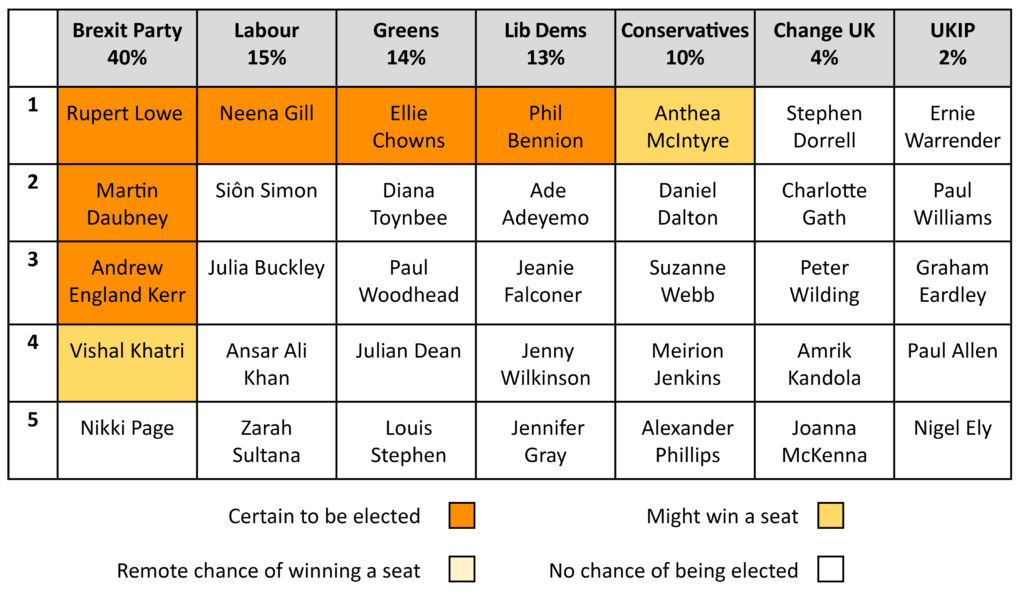It's pretty simple, but I'm unconvinced by their analysis and i'm not sure how often they update their pages. Basically they take the "latest" poll for a given area (if a breakdown is available) then work out the number of seats that goes to each party via the D'Hondt method (the method used in Euro elections).
To run you through an example, here's a guess for the North West based on
this survey (conducted between 8th and 17th May so a bit elderly). According to that and using the D'Hondt method the breakdown of seats would be as follows:
Brexit Party:
32%,
16%,
10.7%, 8% = 3 seats
Labour:
22%,
11%, 7.3% = 2 seats
Lib Dems:
17%, 8.5% = 1 seats
Cons:
9%, 4.5% = 1 seat
Green:
9%, 4.5% = 1 seat
For D'Hondt method, you divide party support by 1,2,3,4 etc, then find the x highest number of votes (where x=amount of seats available)and allocate seats accordingly.
In this case there are eight seats, so the eight highest vote proportions receive them.
My reading of that poll is that remainers are in a bit of a pickle because they need two things to happen: They want the Greens to stay ahead of the Tories and they want the Lib Dems to sneak the eighth seat at the Tories' expense. That's not the same as remainvoter.com's analysis though; their analysis claims Labour is already in possession of 3 seats and that more folk need to vote green in order to nab the final one off the Tories.
Fortunately you can go to the breakdown tabs of your latest, favourite opinion poll and work it out for your own area in less than 5 minutes all by yourself. The only problem being (for them and for you) that some polls don't delineate by exact election area.


